May 30-June 3, 2022
IAHS Scientific Assembly, Montpellier, France
Abstract
Coastal lagoons are biodiversity hotspots, but often affected by human pressure like high nutrient and sediment loads from intensive agriculture and negative impacts from tourism and urban expansion. The Mar Menor (southeast Spain) is the largest salt water lagoon of Europe, however, in recent years the lagoon has been subject to a substantial loss of its biodiversity due to increasing human pressure from the surrounding Campo de Cartagena catchment. The Campo de Cartagena is characterized by a semi-arid climate with long dry spells and infrequent, but extreme, precipitation events. Since the opening of the inter-basin water transfer Tajo-Segura in 1979, the area of intensive irrigated agriculture has progressively increased, from around 10% in 1977 to 45% in 2020. The aim of this study is to evaluate the impact of these historical land use changes on a range of hydrological and soil erosion indicators. These indicators include irrigation water demand, plant water stress, soil erosion, sediment yield, among others. We also evaluated an adaptation strategy by creation of a 1.5-km green buffer surrounding the Mar Menor lagoon consisting of wetlands with the aim to catch sediments before they can enter the Mar Menor. We applied the hydrology-soil erosion model SPHY, which simulates the most relevant hydrological and soil erosion processes, including irrigation and sediment transport. The model results show that historical land use change caused a substantial increase of irrigation water demand (+209%), sediment yield (+42%) and flood discharge (+115%), which negatively impact the scarce water resources, the water quality of the Mar Menor lagoon and flooding of urban areas. The Green buffer scenario has the potential to decrease the impact on the Mar Menor through a significant reduction in sediment yield towards the lagoon.
×
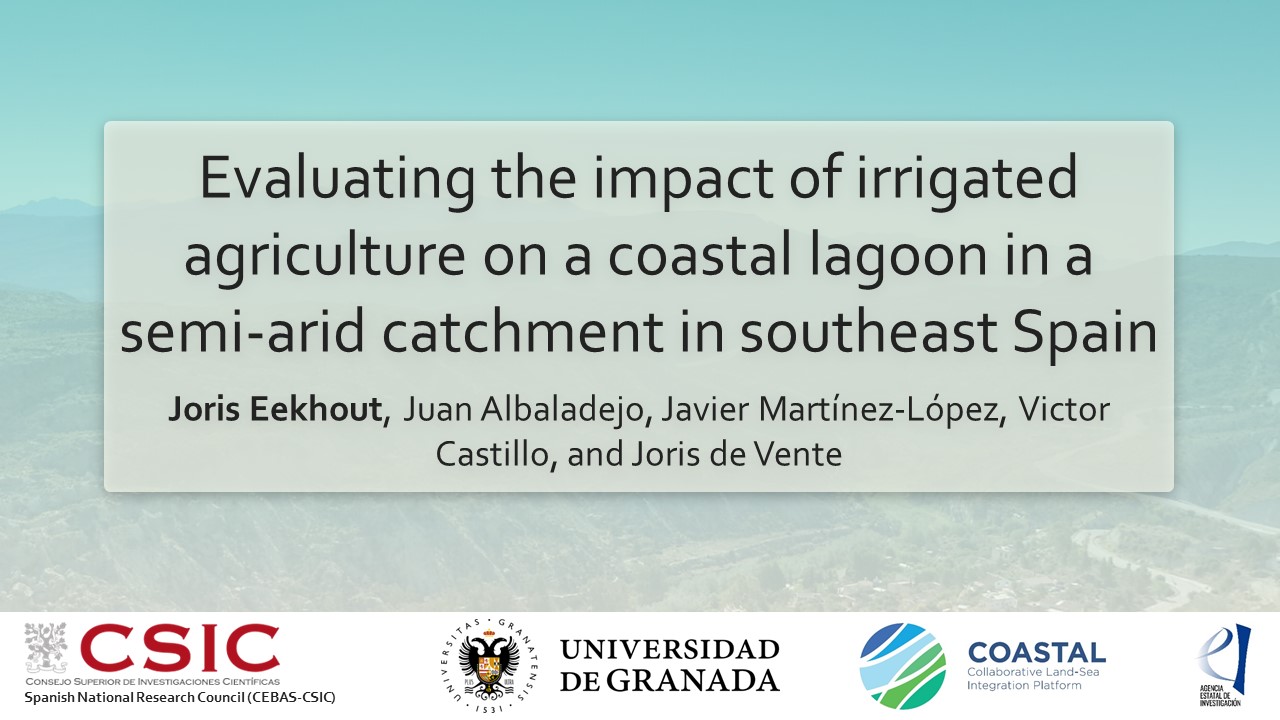
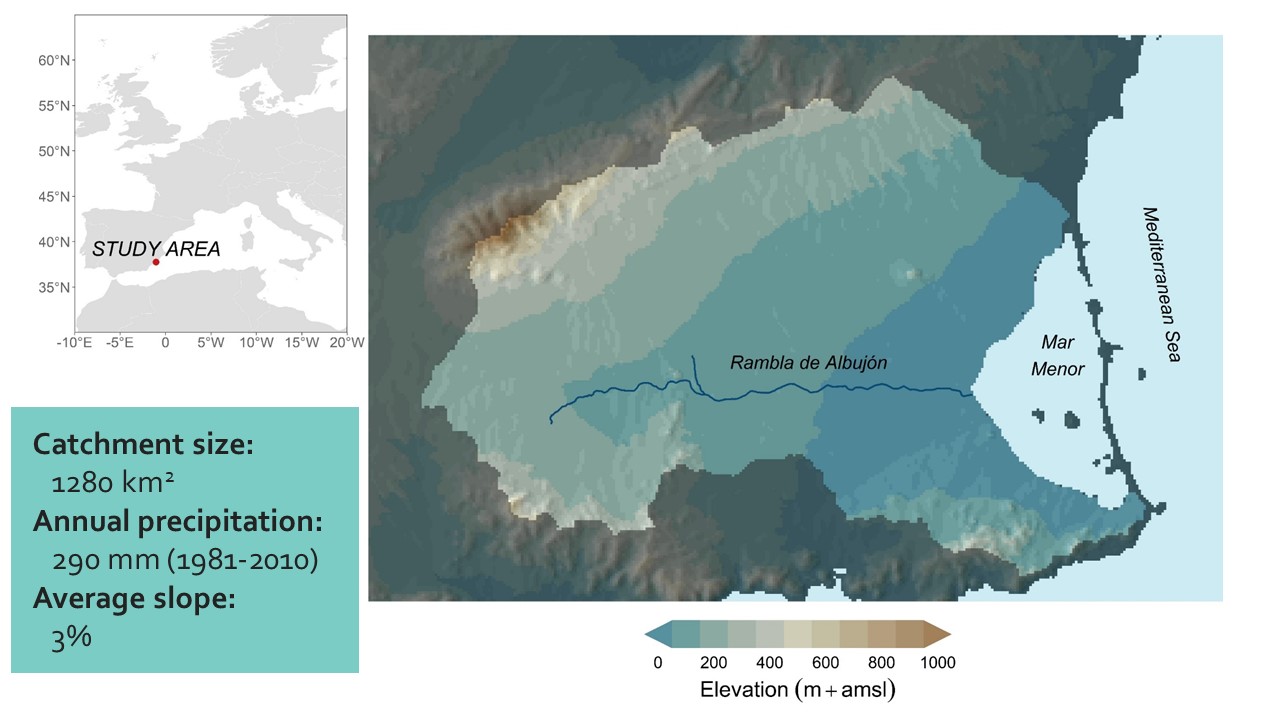
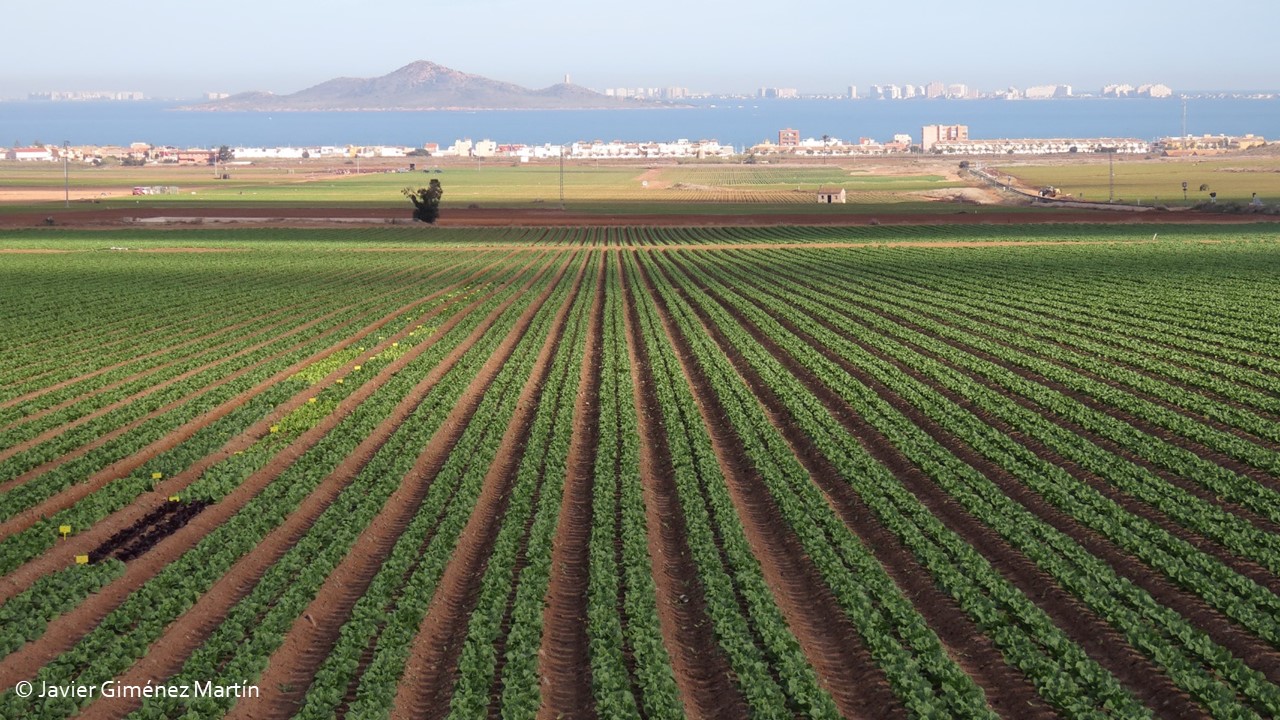
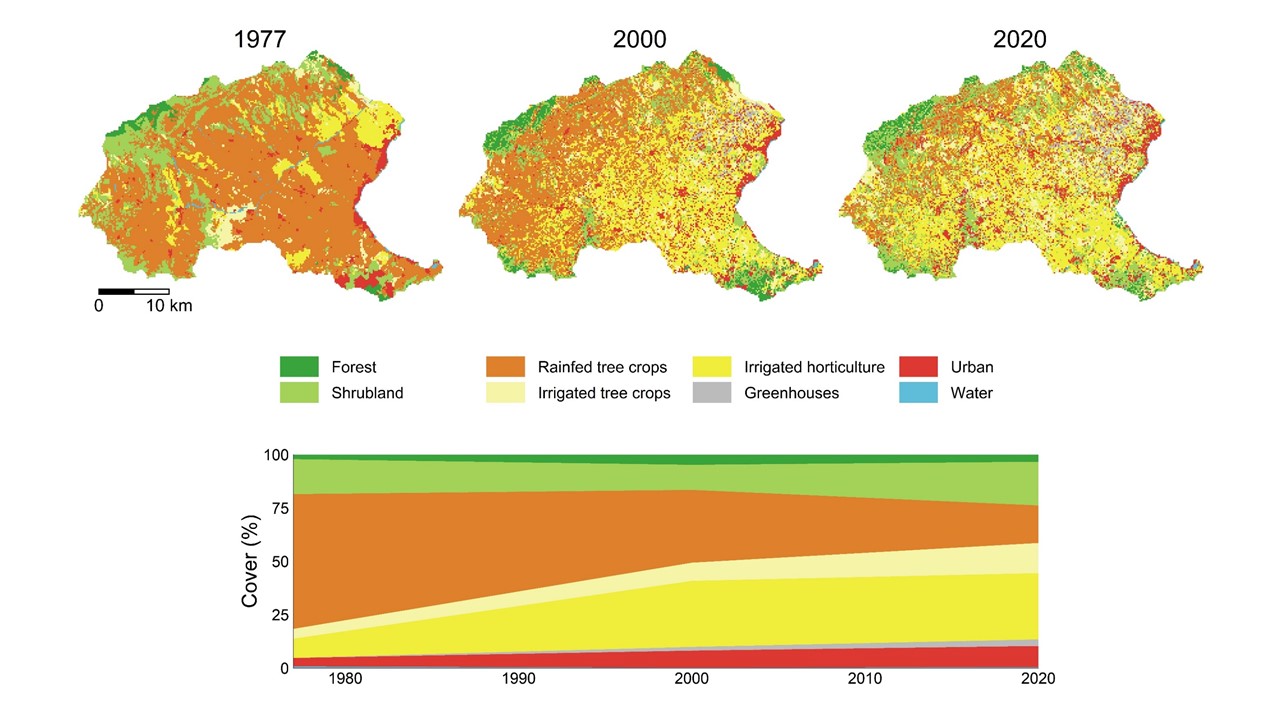
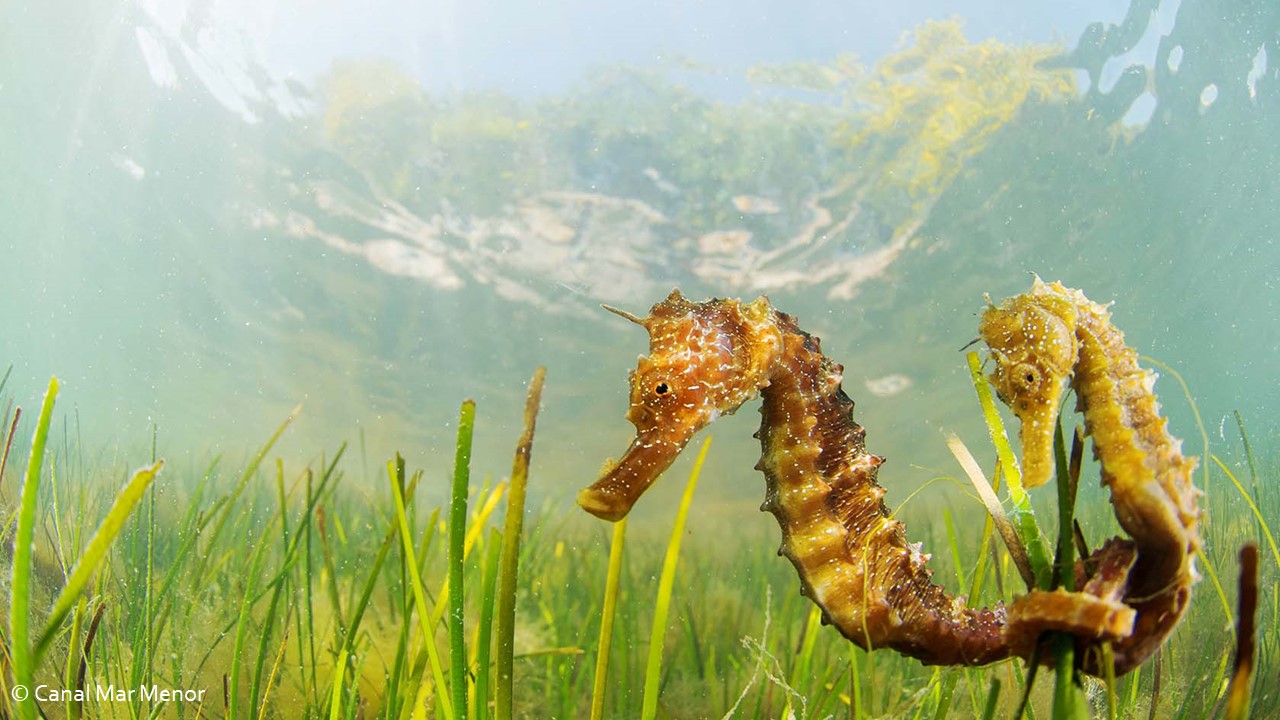
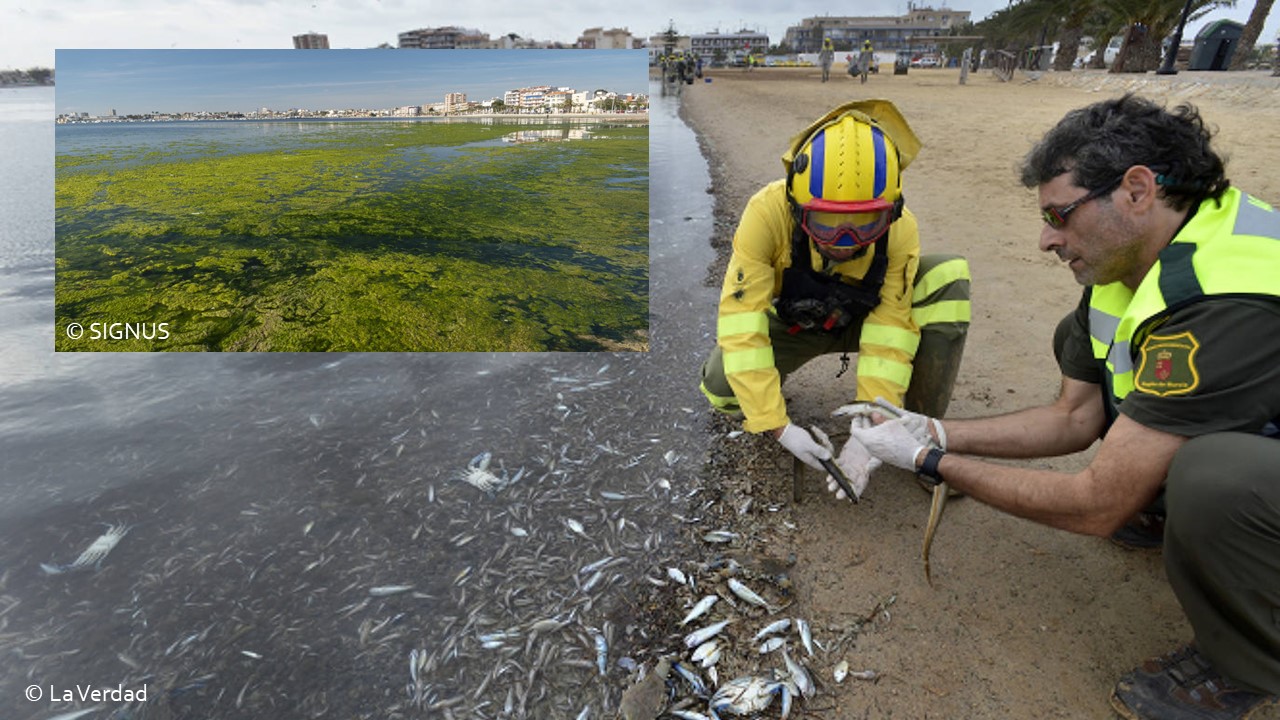
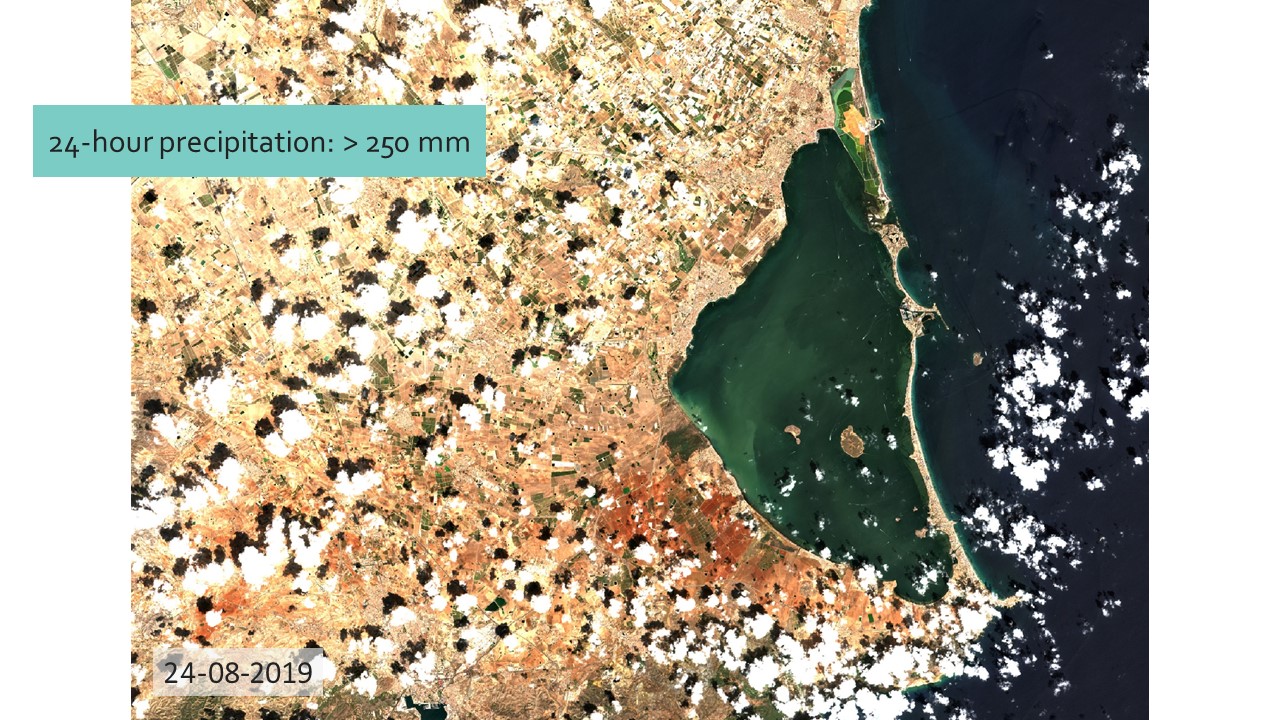
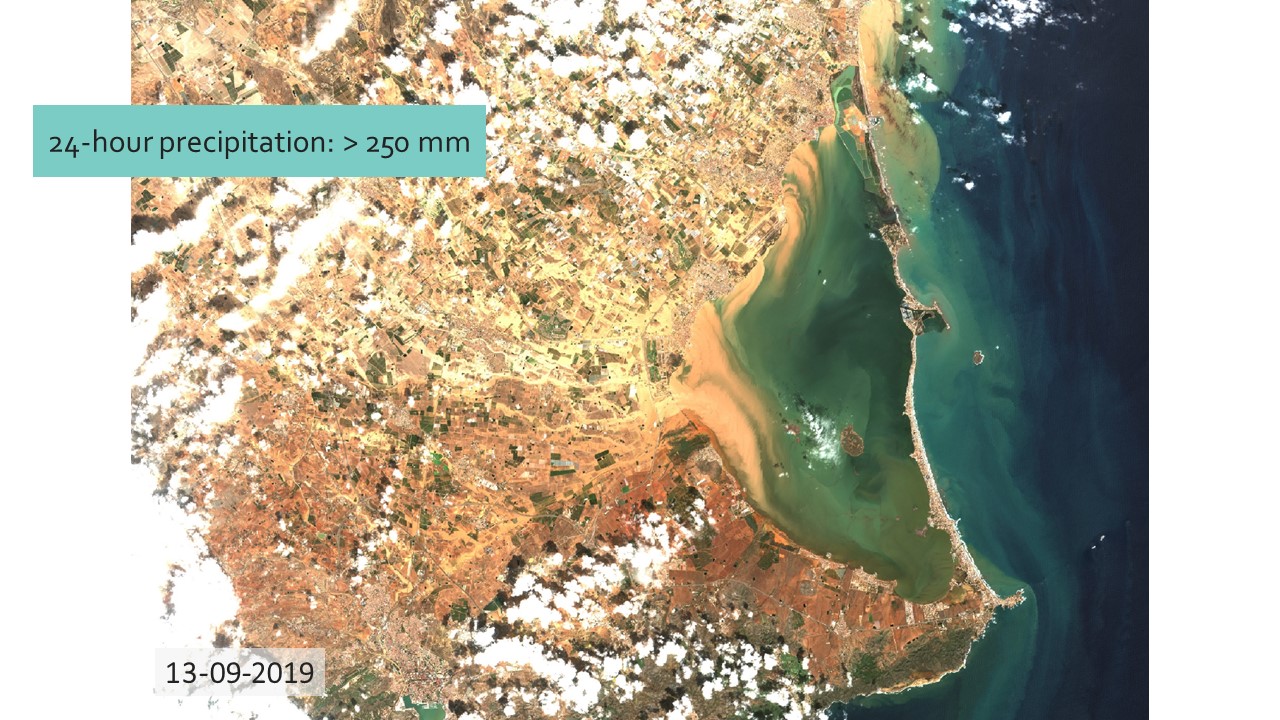
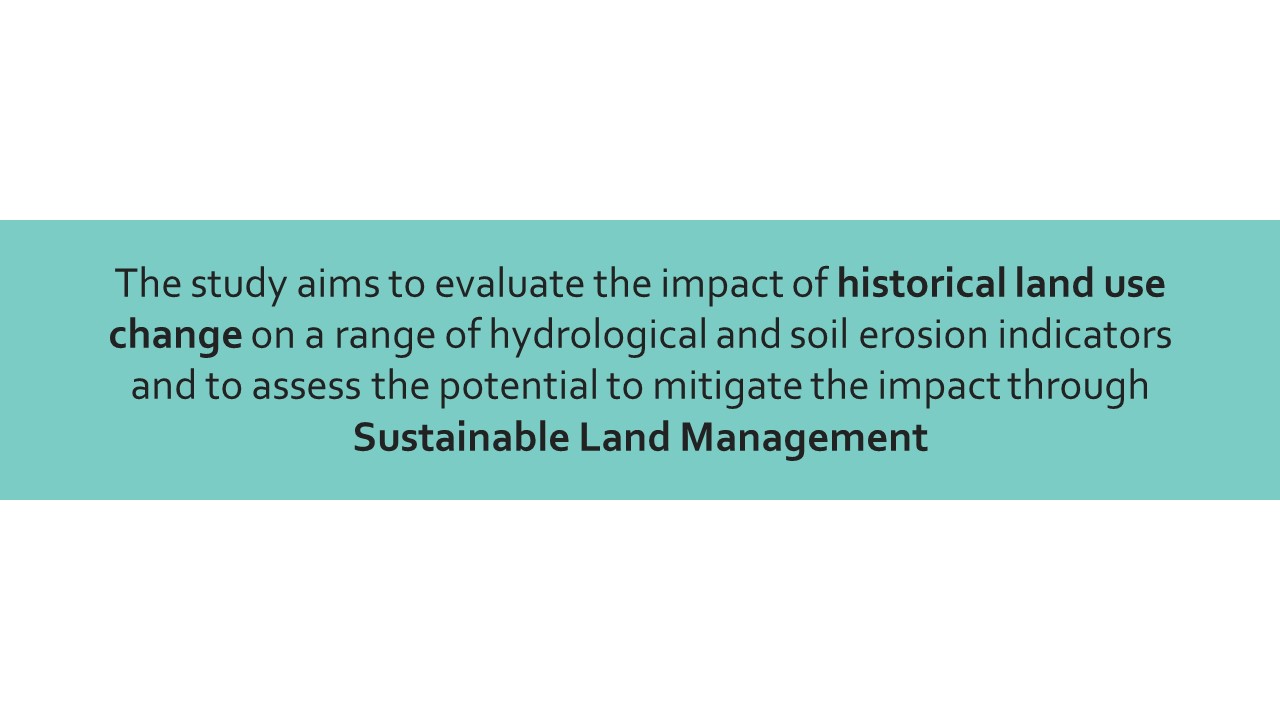









1/18
Welcome everybody, my name is Joris Eekhout and work at the Spanish National Research Council. On behalf of my co-authors I present the work that was performed in the Horizon 2020 COASTAL project.
2/18
In this presentation I will focus on the Campo de Cartagena catchment which is located in the southeast of Spain. The study area is characterized by a semi-arid climate with an average annual precipitation sum of 290 mm. Typical are long dry spells and infrequent, but extreme, precipitation events.
3/18
The land use in the study area is currently characterized by intensive irrigated agriculture like shown in this photo. Typical crops in the study area are lettuce, broccoli, melon and artichokes. Most of these crops are grown in the Winter months and are exported to other European countries.
4/18
Since the opening of a inter-basin water transfer in the late 70s, the area of intensive irrigated agriculture has progressively increased, from around 10% in 1977 to 45% in 2020. Urban areas also increased, mostly in the coastal area as a response to an increase in tourism.
5/18
The Mar Menor is the largest salt water lagoon of Europe and was once a biodiversity hotspot.
6/18
Unfortunately, the increase of irrigated agriculture had a devastating impact on the ecological status of the Mar Menor. Especially in the last few years, there has been a series of ecological disasters, such as mass fish death and algal blooms.
7/18
One of these ecological disasters happened a few weeks after a very intense rainfall event, in which more than 250 mm fell in 24 hours. This is a satellite image from a few weeks before the event.
8/18
This satellite image shows the situation just after the event, with large amounts of sediment entering the Mar Menor. It is likely that large amounts of nutrients also flowed into the Mar Menor along with the sediment, putting pressure on the already weakened biodiversity of the Mar Menor.
9/18
In this study we aim to evaluate the impact of historical land use change on a range of hydrological and soil erosion indicators and assess the potential to mitigate the impact through Sustainable Land Management.
10/18
We applied the hydrology-soil erosion model SPHY, which simulates the most relevant hydrological and soil erosion processes, including irrigation and sediment transport. The hydrological part of the model was calibrated using daily discharge data.
11/18
I will show the results of the model application in this schematisation of the study area, showing the land use configuration, the dry river and the Mar Menor coastal lagoon.
12/18
I will focus on four key indicators: irrigation water demand, flood discharge, hillslope erosion and sediment yield.
13/18
This figure shows the land use situation at the end of the 70s, mostly characterized by rainfed agriculture, some irrigated agriculture and urban areas.
14/18
This figure shows the situation in 2020, with a significant increase in irrigated agriculture at the expense of rainfed agriculture and an increase in urban areas.
15/18
This led to an increase of irrigation water demand of more than 200%, an increase in flood discharge and sediment yield, but a decrease in hillslope erosion. The latter is the result of increased ground cover by irrigated agriculture.
16/18
Next, we applied an SLM scenario, which consisted of cover crops in irrigated agriculture, cover crops and organic amendments in rainfed agriculture, which are based on a stakeholder participation process, and buffer strips, which are currently imposed through a recently approved law from 2021
17/18
The model results show a marginal changes in irrigation water demand and flood discharge. However, Hillslope erosion is projected to decrease even further and most importantly, sediment yield is projected to decrease with respect to the baseline scenario.
18/18
We conclude that Sustainable Land Management can significantly reduce the impact of land use change on sediment yield and even further reduce soil erosion. However, additional measures are needed to mitigate the impact on the hydrological indicators.